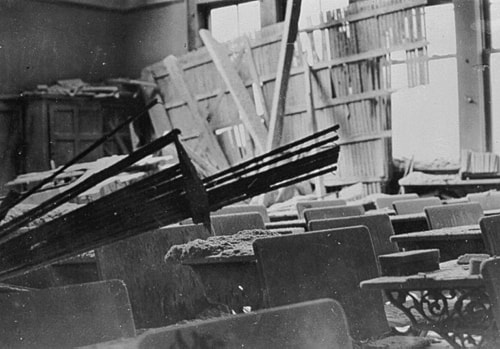Evidence suggests major movement occurs every 400 or 500 years along the Cascadia subduction zone that sits a few hundred kilometres off the B.C. coast. Movement within the zone, which stretches from the middle of Vancouver Island to northern California, could produce an earthquake with a magnitude of at least 9.0.
The last rupture occurred around 1700 AD. The ensuing earthquake/tsunami was comparable to the one that struck last week in Japan.
Geographical similarities between the West Coast and Japan begs the question: When will the big one strike here?
"Of course no one really knows," said seismologist Dr. George Spence, an earth and ocean sciences professor at UVIC. "It's statistics that you're working with. However, what you do know is that it will happen...You can imagine, when you see that tsunami it goes across eight kilometres inland, all the stuff it carries, including massive amounts of sand from the sea floor, which gets re-worked. What's going to be there is a sand layer, course sand that's going to be over the entire flooded region."
For the past dozen or so earthquakes in the Cascadia zone in the last 6,000 or 8,000 years, Spence said the average time between big events has been 500 years.
"It's within those bounds," he said. "You don't really know what exact time the next one will be."
Last summer, he collaborated with Japanese seismologists in a project that utilized 40 Japanese-designed seismometers on the sea floor. They recorded 1,500 small earthquakes off Vancouver Island.
"Over the coming months a lot of analysis will be done to see what went on," Spence said, adding the Japanese have a "massive network" consisting of 1,000 instruments spread throughout the country and high-precision GPS stations that can determine how much of the country has moved. Over the next few months, he said Japan will continue shifting in an earthquake sense and in a "creep sense" where it creeps back to its former position.
"It will be very useful for future events," Spence said.
Thursday's earthquake in Japan has been upgraded from 8.9 to 9.0, the fifth largest earthquake recorded since 1900.
The 2004 earthquake in Sumatra registered 9.1 on the Richter scale. Spence notes the fracture zone extended 1,000 kilometres.
He said the quake that devastated the area near Kobe, Japan in 1995 was a "shallow" 6.8 earthquake at the surface on land that did not result in a tsunami. Still, the destruction claimed more than 5,000 lives. He said the latest earthquake was also shallow but was below the sea floor thereby causing the tsunami.
Should an earthquake of this magnitude strike B.C.’s coast, residents would have just 15 to 20 minutes to find high ground before the tsunami hit.
"That's the order of time," Spence said. "It travels supersonic jet speed, 800 km/h. Here in Victoria, fortunately, we are somewhat protected by the Strait of Juan de Fuca. Unlike Japan, there's not the population, but there is still obviously a population that will feel that effect."
When and if the big one strikes the Island, all we can do is to be prepared.
"I think that's one thing this earthquake's going to make people aware of," Spence said. "When you see it through the media happening in real time almost, then it really puts a face to the possibility that it could happen to us. I think what people will learn from the Japan experience is, in their preparations, what sort of things worked and what sort of thing didn't? And we can undoubtedly apply that to our situation."
reporter@comoxvalleyrecord.com
